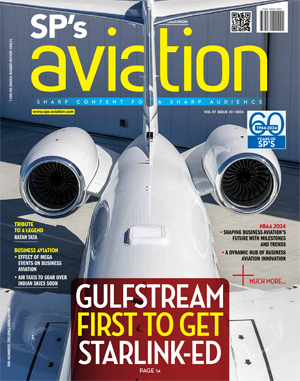INDIAN ARMED FORCES CHIEFS ON OUR RELENTLESS AND FOCUSED PUBLISHING EFFORTS

SP Guide Publications puts forth a well compiled articulation of issues, pursuits and accomplishments of the Indian Army, over the years

"Over the past 60 years, the growth of SP Guide Publications has mirrored the rising stature of Indian Navy. Its well-researched and informative magazines on Defence and Aerospace sector have served to shape an educated opinion of our military personnel, policy makers and the public alike. I wish SP's Publication team continued success, fair winds and following seas in all future endeavour!"

Since, its inception in 1964, SP Guide Publications has consistently demonstrated commitment to high-quality journalism in the aerospace and defence sectors, earning a well-deserved reputation as Asia's largest media house in this domain. I wish SP Guide Publications continued success in its pursuit of excellence.
Confusion Galore

News
In the aftermath of the official termination of India’s quarter-of-a-century-old Integrated Guided Missile Development Programme (IGMDP) in December 2007, the Defence Research and Development Organisation (DRDO) is reportedly focusing on the development of Astra air-to-air missile systems. Also on the anvil are four other missile systems: the 700 km range K-15 submarine launched ballistic missile, the 290 km BrahMos supersonic and hypersonic cruise missiles, the 3,500-km range Agni III ballistic missile and the long-range surface-to-air missile system being jointly developed with Israel.
Views
India, it may be recalled, had launched an ambitious indigenous programme for the development of a comprehensive range of missiles, including the intermediate-range Agni and short-range Prithvi surface-to-surface ballistic missiles, Akash medium-range and Trishul short-range surface-to-air missiles, and Nag anti-tank missile systems. The project was launched in the early 1980s and headed by the DRDO with the former President of India, Dr A.P.J. Abdul Kalam, as one of the chief architects. On January 8, 2008 the DRDO announced it would be closing the missile programme since most of the proposed missiles had been developed and inducted in the Indian armed forces. It further stated that the new missile and weapon systems would be developed in much shorter timeframes with foreign collaboration and participation by private industries. The fact that not all the old programmes were fully developed created confusion, which deepened due to criss-cross reporting by the media on the ongoing and follow up programmes. That said, it would perhaps be prudent to look at the status of the previous programmes.
Of the early projects, it is only the Prithvi which can claim to be fully successful. Agni, on the other hand has yet to find its full potential. While Agni Mk I has been operationalised, the MK II version has yet to be deployed operationally and the Mk III is still under development. As far as surface-to-air missiles are concerned Trishul has been a total failure as the programme has been foreclosed at the technology demonstration stage. Akash has found conditional success in that it has conditional acceptance from the Air Force while the army has rejected it outright citing cross-country incompatibilities as the main reason for non-acceptance. The last, Nag missile system, is yet to undergo field trials before its acceptance by the army.





